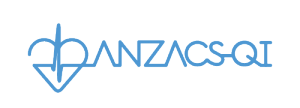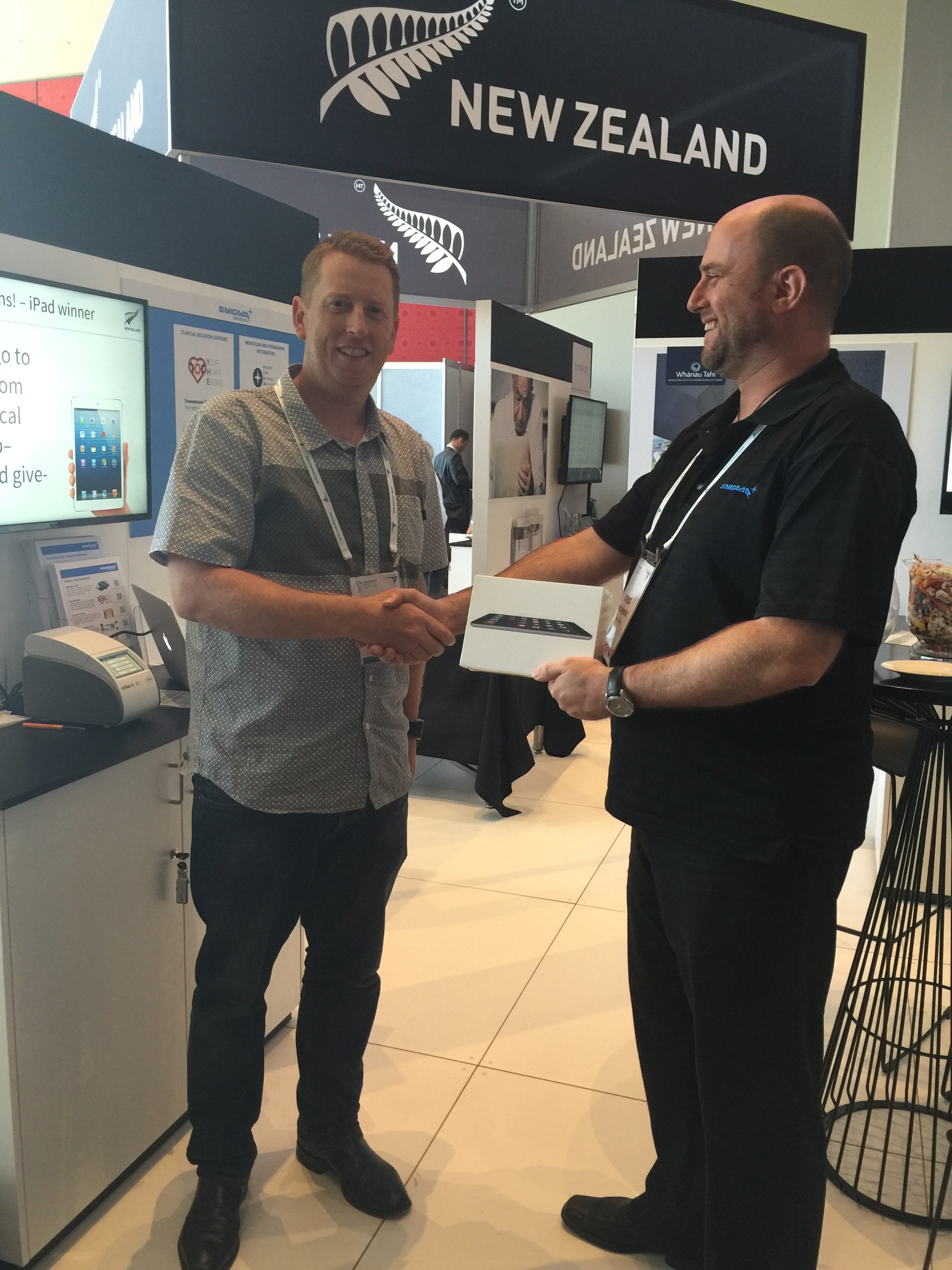by Chris W | Mar 10, 2020 | General
In light of growing local concerns around COVID-19 and the potential for Auckland-based community-spread, Enigma has developed a policy aimed at keeping our staff, their families and our customers safe from impact (which Enigma might create, or be reasonably in control of).
Today, 10th March, Enigma has implemented a number of changes to policy and to our office setup:
- No casual visitors will be allowed to enter our office space. – Couriers etc will be greeted at our office door.
- All booked appointments will be expected to execute hand-hygiene measures upon arrival, visitors will be limited to our entry area, meeting room and bathroom areas. General office space and kitchen areas are out of bounds.
- Enigma staff will be prohibited from attending meetings at Hospital, DHB, PHO or clinic settings (except where this is absolutely imperative).
- Enigma staff are strongly encouraged to make every effort to arrange remote meetings wherever possible. We have good teleconferencing and online meeting tools which should enable us to carry on with all business meetings remotely.
- Office and personal hygiene policies and procedures have been circulated to staff in an effort to keep our office space ‘a clean and safe zone’.
- While we will be happy to wave and say hello, we won’t be shaking hands for the immediate future.
- Staff have been requested to consider whether travel is necessary, and also to be considerate of any mass-public-gatherings they attend.
- Staff have been requested to execute good personal hygiene at home (and in transit) and to encourage good practices across their families and direct contacts.
This position and our stance will be reviewed weekly.
If you have any questions about this, please contact us.
A copy of our internal policy document is here: Covid-19-Policy_v1.01 – for anyone with shared interests / common concerns.
(Please also note our anti-spam requirements, linked to from the bottom of each and every page on this website)
by Chris W | Jan 25, 2017 | General
Today Enigma has proudly agreed to be a major sponsor for Chris W, General Manager of Enigma for his attempt to ride and complete a ‘Saddle Sore 1600’, motorcycle endurance ride for charity.

Chris will have to ride a minimum of 1600km, within a 24 hour time period and within a set of reasonably strict conditions. – This is not a race. He hopes to achieve an internationally recognised award from the Iron Butt Association (IBA) called the Saddle Sore 1600(km). This is the metric variant of their well known SS1000 (1000 miles). The ride is scheduled in NZ for some time in Mid-to-Late February, weather and work dependant.
He is performing this attempt, with a long term friend; Jon Mitchell who is also riding for charity. Chris has chosen to help raise funds for Aran Animal Rescue (http://www.arananimalrescue.org.nz/) and Jon is helping to raise funds for a cancer related charity (TBC). He has set a fundraising target of $1 per km, hoping to raise $1600 for the rescue.
Aran is made up of around 10-12 primary volunteers who manage to save around 200 dogs from slaughter each year from pounds who can’t otherwise re-home them. Aran work to locate, collect, foster, then find permanent homes for them all. They are dependant upon raised funds to help to pay for transport, food, pound fees etc.
Chris’ ‘givealittle’ page is here: https://givealittle.co.nz/fundraiser/saddlesore4aran
Updates on his effort will be posted on his Facebook Event page: here.
If you would like to help to sponsor Chris, please visit those pages to see what it’s all about. – Thank you.
Further details on the SS1600 type of event can be found here: http://www.ironbutt.org/rides/ss1600k.htm
by Chris W | Feb 12, 2016 | General, Medical

ANZACS-QI is a National system delivered within NZ to all of the public and private Coronary Care units and Cathlabs. It forms a National Registry to collect data on all patients who present with suspected Acute Coronary Syndrome, as well as those who are treated within Cathlabs, and who receive device implants as part of their cardiac-care treatment. The system is based on the PREDICT platform and was developed by Enigma in conjunction with Dr Andrew Kerr with funding from CMDHB. It was further developed later, with the NZ Cardiac Network, under contract with New Zealand’s Ministry of Health and has been delivered nationally in partnership with NIHI.
The following excerpts are taken from an editorial article [Mark Webster; ‘Early angiography and revascularisation for acute coronary syndromes in New Zealand’, NZMJ – 8th Jan, 2016] – Full article is available here with subscription: https://www.nzma.org.nz/journal/read-the-journal/all-issues/2010-2019/2016/vol-129-no-1428-8-january-2016/6678
Excerpts taken from the referenced editorial article:
ANZACS-QI is a rigorous, prospective and comprehensive database on all patients with ACS undergoing angiography. … The 3-day target time for angiography in ACS patients was an excellent choice as a KPI: clinically relevant, achievable and with the potential to save money. This has proven to be the case.
ANZACS-QI is now providing a wealth of information about the management of coronary disease in New Zealand. Merging data from other sources, particularly the national mortality, hospital discharge diagnosis codes and pharmacy registries, creates a powerful tool for predicting longer-term outcomes. …
…
The potential for ANZACS-QI extends well beyond short-term audit and quality control of local practice. Research can be under-taken by adding database fields for the duration of a study, and national registries used to collect relevant endpoints. … New Zealand is now well placed for such research; being small and somewhat isolated is, for once, to our advantage. Beyond the usual randomised trials with individual patient consent, there is also the potential to undertake systems research, comparing ‘routine’ practices applied to large groups of patients.
In summary, ANZACS-QI is an example of money well spent in a public health service looking to achieve both optimal clinical outcomes and efficient health service delivery. Without good data, it is easy to repeat the mistakes of the past. As Lord Kelvin said “to measure is to know”. It is vital that we evaluate our practice in an ongoing and rigorous manner … ; it is also important to maintain a healthy scepticism regarding our currently-held beliefs.
Further information on the ANZACS-QI system is available here: http://www.enigma.co.nz/predict-medical/anzacs-qi/
Further information on the extensions of this base system to service research / study requirements is available here: http://www.enigma.co.nz/predict-medical/anzacs-qi-registry-trials/
About Mark Webster: Mark works as a Consultant Cardiologist, Director, Cardiac Catheterisation Laboratories Auckland City Hospital and is Hon. Associate Professor of Medicine, University of Auckland.
by Chris W | Jan 11, 2016 | General
Software development is a relatively new discipline, when you think about it. Civilisations have been building bridges and structures for millennia. Scientists and inventors have been working with electricity for centuries. Computers, on the other hand, have only been around for decades, and younger still is web development, which only really started to take off in the late 90s. Because of this, computer scientists and software engineers are constantly learning and revising their approaches – sometimes for the better and sometimes for the worse. It’s often impossible to know which until they’ve taken the plunge and learned from their mistakes. Nobody is immune to this, not even software giant Microsoft. Microsoft has often tried to innovate and break the mould with less than favourable results, and the most famous example of this is Internet Explorer.
The end of an era:
12th Jan, 2016 marks the end of an era for the web developers around the world. – Long have we been challenged by multi-various versions of Microsoft Internet Explorer and the many different ways in which they render web pages. We are just hours away from the official, end of life date for a collection of these MSIE versions. (https://www.microsoft.com/en-us/WindowsForBusiness/End-of-IE-support)
As from 12th Jan, 2016, the only officially supported MSIE version (with few exceptions) will be MSIE11. (https://support.microsoft.com/en-us/lifecycle#gp/Microsoft-Internet-Explorer) – Windows Vista users are expected to be updated to SP2 and they have MSIE9 available to them, this will be supported through to April, 2017 (this is the notable exception for desktop users). All Windows 7 users are expected to be running SP1 currently, and this supports MSIE11. All Windows 8 users are expected to be updated to Windows 8.1, this too supports MSIE11. Windows 10 shipped with MSIE11 available through the new ‘Edge’ browser.
Another notable exception are those users who use some form of Windows Server 2008 SP2, some might use remote, thin client connections onto a Windows, Terminal Services Server on this version. If you do, then you will have MSIE9 available to you through to the end of support for Windows Server 2008 SP2; amazingly this is as far out as January 2020. Most desktop based users will not fall into this group, they should be a small group and as such may not attract sufficient attention to warrant dedicated, and continued support for MSIE9.
Forcing people to upgrade:
Microsoft will release an update to Windows 7 SP1 and Windows Server 2008 R2, SP1 users to add a ‘nag screen’ function which will tell them that they need to migrate to MSIE11. This will be triggered each time MSIE 8, 9 or 10 are opened. (https://support.microsoft.com/en-us/kb/3123303?sd=rss&spid=14019)
There is little reason why organisations should not look to upgrade from Windows Server 2008 through to Windows Server 2012, SP2. This will allow them to use MSIE11. There is also little reason for anyone to stay on Windows Vista.
Formally MSIE 7 became unsupported when Windows XP (April 2014) and Windows Server 2003 (July 2015) became unsupported.
Permitting development organisations to become more future focussed:
Significant changes were made within MSIE with the rendering engines used and with their CSS compatibilities. MSIE8, 9 and 10 are now old and do not fully support CSS3. (https://msdn.microsoft.com/en-us/library/hh781508(v=vs.85).aspx)
MSIE11 is the first version of MSIE to fully, wholly support these standards, even MSIE10 does not fully implement CSS3. For developers, looking for a consistent experience when delivering software, having to cater for the lowest common denominator is painful, time-consuming and costly and it does not allow us to deliver the very best, cutting-edge User Experience within products.
It has been a long time coming; waiting for this significant change in support policy from Microsoft, and this will now enable development houses to modernise their own support policies in line with what can be reasonably be expected of their user-base.
Enigma’s end users are commonly not home based users, they are professional health workers. Professionals who interact with an individual’s health data within web based products have a reasonable obligation to ensure that their systems are kept current, up to date, and suitable for such use. This means that they must be capable of being supported, with the latest in the way of security, and other IT software updates. Without these they will become exploitable and could be unsafe for use with sensitive / personal data.
This note was published, relating to USA Health related use (https://www.microsoft.com/en-us/WindowsForBusiness/End-of-IE-support):
Compliance:
Businesses that are governed by regulatory obligations such as HIPAA should conduct due diligence to assess whether they are still able to satisfy compliance requirements using unsupported software.
As a development house, if we’re not constantly having to look backwards to ensure that things work for out-dated versions of software, we’re not held-back in the same way as we have been; we can use modern display frameworks, which both speed up development and deliver a better and more consistent look and feel to the users. As such, in-line with Microsoft’s latest end-of-life support changes, Enigma will be updating our Terms of Service, and our supported browser lists to focus on the latest, and currently supported sets of all mainstream, commonly used browsers.
If you have any questions or concerns about how these changes may impact you, your organisation or your users, please feel free to contact Enigma for some advice. https://support.enigma.co.nz
by Chris W | Dec 23, 2015 | General, Medical


PREDICT (Enigma) / VIEW (University of Auckland)
Partnership statement; looking forward to 2016.
23rd Dec, 2015
The University of Auckland’s, School of Population Health and Enigma Solutions Ltd, have been in partnership with PREDICT, under the ‘VIEW’ programme of work and its predecessors, since 2002. This partnership continues to support continued research efforts, funded by various, multi-year HRC grants and is of NZ National interest.
This valuable, back-end, research based work sets PREDICT apart from other tools available for clinical use in New Zealand; there is no comparable tool having research based linkages as a primary goal.
Since its formation the aim of the partnership has been to deliver robust, evidence based guidance (mainly related to cardiovascular disease and diabetes) into the patient’s care setting to:
- aid consistency and appropriateness of delivered care (minimise variations leading to under or over-treatment);
- collect data relating to service delivery and through linkage to national (patient outcome) datasets, and thereby
- validate current guideline recommendations and fit for the NZ population and
- improve the specificity of risk prediction approaches for the NZ population by creating a NZ specific set of algorithms based on observed incidence rates.
Secondary aims have included:
- the creation of secondary risk prediction equations for those who have already had a CVD event;
- to map variations in treatment and risk profiles geographically for NZ
Organisations that use Predict are invited to opt-in to participate within the research programmes by contributing the data which is collected during their routine clinical services. This data is handled appropriately with sophisticated anonymisation routines and complies with the National Ethics Committee approval granted to the programme.
There are now over 500,000 de-identified individual New Zealand patient profiles within the PREDICT cohort that are available to the VIEW programme for their analysis and linkage to NZ Ministry of Health provided ‘outcomes data’. -(vs Framingham’s original cohort of just 5,209 patients.)
VIEW has worked towards generating a NZ specific, validated risk prediction algorithm which can be more accurately applied to our own specific population and is more relevant to today’s other, wider risk factors such as social determinants of health and medication management. Currently, at the time of writing, an alternative, NZ specific, general population, primary prevention algorithm has been independently peer reviewed in a process organised by the Heart Foundation and it is expected that it will be available in the new year (2016).
Early testing and implementation for demonstration purposes of these new algorithms has begun alongside the peer review process with some interesting findings.
Additionally secondary prevention equations (risk assessments for those who have already had a CVD event) have also been independently peer-reviewed and will be available in 2016 following completion of testing processes.
A third set of new, validated equations are expected to be available specifically for Maori and for Diabetic patients in 2016. This work is expected to be on-going with refinements made to risk prediction approaches, creating more personalised, tailored outputs for NZ’s sub- populations.
In 2016, Enigma and VIEW will be launching Your Heart Engine (YHE), a combined set of risk assessment and risk visualisation tools for CVD. This is a centralised service into which each of these newly developed risk calculators will be released. Coupled with this, the Your Heart Forecast tool will be modified to support new scenarios, such as the secondary prevention equations.
CVD / Diabetes electronic clinical decision support (eCDS) tools use an individual’s calculated risk as one of the management determinants. The YHE approach is capable of supplying the risk profiles into the eCDS tools so that their management rules can provide management advice according to a patient’s estimated risk score.. PREDICT CVDDM will be modified to use the YHE content in this manner, workplace instances of PREDICT already run in this way.
VIEW and Enigma remain fully committed to the continued support and maintenance of the PREDICT eCDS management components; consistent and appropriate (evidence based) management of patient’s risk remains the key aim of the programme. The development of Your Heart Engine is one step towards making these management tools simpler, quicker, more cost effective and more consistent; it also strengthens our current focus on quality assurance, doing the job well and doing it once.
The Your Heart Engine (which will include relevant access to the graphic risk communication tools) will be commercially available as a service for other eCDS / CVD RA front-end tools to use. Linking into this centralised service will provide a consistent risk assessment approach across multiple tools and across New Zealand. Enigma and VIEW have an excellent reputation for high quality, clinically orientated implementation of these tools and it is exciting to be able to offer these services out to a wider set of users. For more information visit: https://secure.YourHeartEngine.co.nz

Through YHE, other tools, vendors and groups of end users will have an option to opt-in to these VIEW based research programmes, this is something which will be fully explored with each new group who adopt YHE as a service.
By continuing to support PREDICT products, you are helping to contribute to these research efforts, which in turn is now paying dividends for NZ’s evidence based, population health approaches.
2016 should be an exciting year, we’re grateful for your support to-date and hope to continue to deliver quality products which help to support your clinical service delivery for your patients.
Merry Christmas and Happy New Year from your friends at Enigma and our UoA VIEW team collaborators.
For a PDF version of this document: click here.
by Chris W | Nov 25, 2015 | General
IHIC Conference
Enigma was thrilled to be at the IHIC conference in Melbourne this year, it was great to catch up with so many of you. We’re grateful for the time which you spent talking to us, checking out our exciting range of products for Primary and Secondary Care.
The IHIC conference is an excellent event for sharing thoughts and ideas particularly for Primary Healthcare workers striving to achieve improvements in quality outcomes and care delivery for patients. Enigma has been in this space, along-side primary healthcare partners for the past 18 years and has delivered innovative, quality products to the doctor’s desktop, always with a keen focus on improving the quality and consistency of care delivered to patients through the use of our supporting tools.
We are very pleased to be able to offer IHIC delegates some FREE TRIALS of two of these software solutions for use in General Practice, or in specialist secondary care settings. Please click here for more details.

iPad draw presentation at IHIC Conference 2015 – Our lucky winner, Durham Green.






